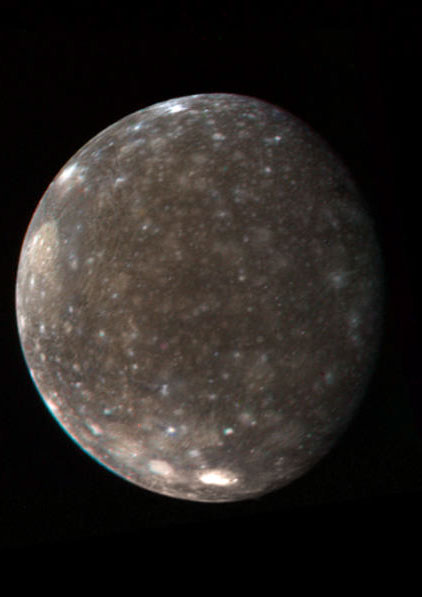Astronomy Picture of the Day
Discover the cosmos! Each day a different image or photograph of our fascinating universe is featured, along with a brief explanation written by a professional astronomer.

Credit: Voyager 1, NASA |
Explanation: Why does Jupiter's moon Callisto alter the magnetic field of Jupiter in its vicinity? Callisto itself does not have a strong magnetic field. One possible answer is that Callisto harbours sub-surface oceans of electrically conducting salt-water. This hypothesis was bolstered recently by a new analysis of how Callisto creates and dissipates heat. Callisto is thought to create heat by the radioactive decay of internal rock -- a process that keeps the Earth's mantle molten. Callisto may not be able to dissipate this heat very efficiently, however, as it has thick layers of ice and rock on its surface. Perhaps this heat is enough to keep sub-surface water from freezing into ice. With this hypothesis, Callisto joins two other of Jupiter's moons, Europa and Ganymede, in candidates for sub-surface oceans. Callisto's oceans, however, might prove too hostile to support Earth-like life. |
< | Archive | Index | Search | Calendar | Glossary | Education | About APOD | >
Authors & editors:
Robert Nemiroff
(MTU) &
Jerry Bonnell (USRA)
NASA Technical Rep.:
Jay Norris.
Specific rights apply.
A service of:
LHEA at
NASA/
GSFC
&
Michigan Tech. U.